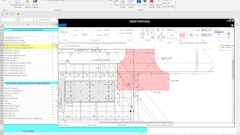One of the fun things about watching old movies (more than 10 years old to be precise) is seeing how the world has changed since the movie premiered. When Beetlejuice runs his TV ad in the movie of the same name, he flashes an "800" number, but there's no mention of a Web site as there would be today. In 1975's Three Days of the Condor, there isn't a desktop computer in sight - despite the fact that Robert Redford works for the tech-savvy CIA. In black and white movies from the 1940s, office workers still contact the operator to make a simple phone call.
Perhaps the thing I notice most about them, however, is the way everyone who works for the company works in the same building, all day, every day. They come in to their lush offices, work their 9 to 5 day, then head home to their families - or out for cocktails with their colleagues. The world has certainly changed since then. We have always been a mobile society outside of work, but now that attitude permeates the workplace as well. The central office has given way to mobile workers, working from home, and the mantra of "hiring talent where it lives" rather than relying on proximity to the office as a core criterion.
In many cases, technology has enabled this far more distributed workforce. Cheap and abundant mobile phones have made workers reachable just about anywhere in North America. The Internet and e-mail have extended that reach to just about anywhere in the world. Yet in the midst of all that, like a bug in a salt shaker, is the immobile fax machine.
Now, before you start thinking it doesn't matter because faxing has gone the way of Clara the company phone operator, you should know that according to analyst group IDC, there were more faxed pages in 2007 than in any previous year. Despite e-mail, texting, IMs and all the other technological marvels of our age, faxing still remains the communications medium of choice for forms, legal documents, or any other paperwork that requires signatures or handwritten notes. In fact, in some industries (such as real estate, construction and insurance) it is still the primary means of sending official documents.
So there's the dilemma. The workforce is mobile, but its means of communication is not. Which means non office-based workers who need to read, send, and/or respond to faxes either have to make a special trip to the office to pick them up, have documents re-faxed to them from the central office to another location, or have someone else read the faxes to them and then dictate responses. None of which is very conducive to conducting business.
There is another option: using an Internet fax service. Call it faxing to go, because an Internet fax service gives users the capability of sending and receiving faxes wherever they happen to be - as long as they can get an Internet connection.
Take a real estate agent, for example, who is trying to close a deal on one home while showing another. With a traditional fax machine, the paperwork is sent to the central office, where it must wait until she returns - perhaps at the end of a busy day. If there's a problem or a counter-offer the amended fax is sent back, and the process starts again. The agent could lose an entire day or two depending on the complexity involved.
With an Internet fax service, the agent receives an e-mail notification and preview on her BlackBerry. She can then quickly look over the fax while the prospective home buyers are admiring the marble countertops, write up any changes or amendments as a cover note, forward them to an assistant, and have the whole thing completed by the time the live buyers are checking the basement for water stains. It's a huge advantage that saves time and helps drive efficiency. Not to mention revenue.
Internet fax services are simple to use. You sign up online and are assigned a telephone number - either a toll-free number or a local phone number, depending on your preferences and what options the service offers. Some will give you an application to download, but the better ones won't.
Once you're up and running you can then send and receive faxes through your e-mail account, a secure online server, or both. Again, as long as you have an Internet connection your fax capabilities are operational, whether you're at home, at a customer's office, on a job site, or even stopping off for coffee.
Different services offer different types of "to go" options. For example, some allow you to have the same fax sent to multiple e-mail accounts. This is great for people who are working as part of a team, or with an administrative assistant (virtual or otherwise), because everyone involved can receive the fax without additional forwarding. Receiving e-mail notifications allows you to know instantly when a fax has arrived, and having a preview option means you can look at the fax quickly to determine its contents so you know whether it needs to be opened right now or can wait until later.
Another great feature is online storage of sent and received faxes. That's ideal for users who suddenly need to access an older fax - or who lose their original electronic copy without making a backup. Of course, receiving faxes electronically also means you can easily carry every fax with you on your laptop, so the information you need is always at your fingertips.
Then there's the cost savings. Many people try to work around the static nature of the fax machine by sending faxes from or having them sent to a local quick print shop or other service supplier. At $3 per page, which is a typical rate, that quickly adds up. If you send or receive more than three or four pages a month, an Internet fax service will usually cost less. And there's no waiting in line while three people ahead of you try to decide what color paper to use for their lost dog flyers or which size box would be best to use for sending Aunt Martha 80th birthday gift either.
In our ever-more mobile and distributed society, it just doesn't make sense to have all your important faxes tied to a single location. Instead, take your cue from the quick service restaurant industry: when you're looking at your next fax solution, simply say "Make mine to go."
Steve Adams is Vice President of Marketing for MyFax (www.myfax.com), a provider of Internet faxing services for individual home users, small businesses, and large corporations. MyFax has won a number of awards in head-to-head competitions for ease of use, reliability, and best overall value. He can be reached at [email protected].


























